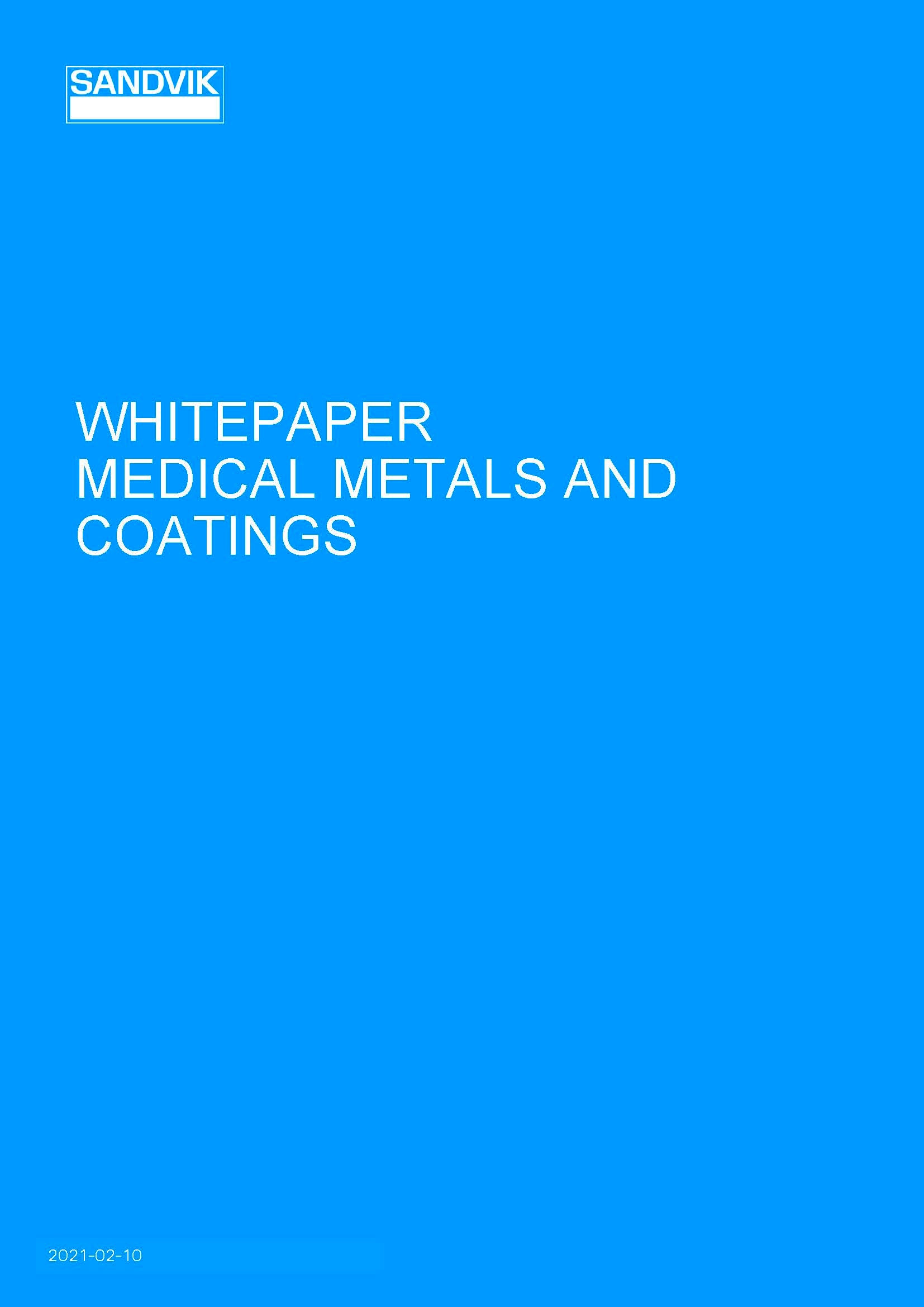
In the precision medical wire industry, innovation is key to cutting edge design that effectively meets a patient’s needs. Once in the remit of science fiction, precision medical wire that can sense, monitor, guide, and stimulate one’s health is now a firm reality of bespoke medical care.
With over 160 years of experience in industry, Swedish company Sandvik and its brand of medical-wire components, EXERA®, are at the forefront of innovations within the sector, ensuring they keep up-to-date with expanding customer demands through pioneering medical wire for health self-service applications.
Medical Device Network spoke with Gary Davies, Head of Sandvik’s Business Unit Medical to discuss the company’s latest innovations, and how to solve the evolving challenges faced by medical practitioners.
Remote monitoring
Precision medical wire is an essential component of many medical devices. Fine-grade medical wire is used for everyday practical and preventative medical treatment in a variety of applications ranging from cochlear implants to pacemakers. Sandvik’s EXERA® program of alloys, wire forms, and wire components can be combined to meet the demands of unique applications.
“The wires that we make go into a lot of different applications,” Davies explains, “and the way I like to describe it is that our wires are used to stimulate or send some sort of signal either inside or outside the body. In almost all cases, the wire is an active part of how the sensor works – a continuous glucose monitor wire, for example, is an active chemical sensor for sensing the amount of blood sugar in your interstitial tissue.”
Digitalisation is one of the biggest innovations currently in the medical industry, particularly in the health self-service sector. Remote monitoring is one of the primary uses of EXERA® wire-components. Apps that monitor blood sugar levels for diabetes patients are now common-place, allowing users the freedom to live safer, ‘new-normal’ lives.
“EXERA® wire components are used in Type 1 diabetes cases,” says Davies. “You can imagine for younger children especially, the parents’ anxiety about whether their child’s glucose and insulin levels are right would be quite intense. But the wire-sensor we put into the patient constantly monitors them and flags up when outside intervention is necessary. The relief a parent has when they can actually look on their smartphone and see what’s happening with their child who may be miles away at school or a friend’s house is invaluable.”
COVID-19 hero
Throughout the ongoing COVID-19 pandemic those with diabetes and heart conditions were particularly vulnerable to the unpredictable virus, making the management of their conditions of the upmost importance EXERA®wire components specialist sensing capabilities housed within various medical devices enabled medical staff and patients with chronic illnesses to stay safely at home as they could effectively monitor their own health conditions.
“The COVID-19 situation means people who have diabetes are extra susceptible to contracting the disease and having such serious symptoms that must be hospitalised and put on a ventilator,” explains Davies. “And of course, healthcare workers themselves have higher risk of contracting the disease every time they interact with a patient. Instead of going in for monitoring or to give blood, patients who hadn’t thought to use one of these monitors before, they can start using that now, so everything can be done remotely and lower the risk to themselves and their medical professionals.”
Tomorrow’s future, today
Recent medical device developments have resulted in customers looking at advancing their application designs, requiring not just precision wire, but multifunctional wires that are able to incorporate multiple capabilities within the same footprint of machine.
Davies explains: “Sandvik has been assisting for the past couple of years in the design of a composite wire that has different elements incorporated into that one wire system. One part of the wire is used to locate the sensing device inside the body, almost like a smart guidewire. We’re really at the top of our game with that creation.”
And the future of precision medical wire? For Sandvik, focusing on research and development is the next crucial step to unlocking further cutting edge multifunctional preventative medical devices with wire components.
“A new device we’re involved with prevents and manages heart failure before it gets to an acute stage,” says Davies. “The wire is inserted in the patient’s cardiovascular system with an antenna that’s attached to this sensor. The whole system provides a continuous output of blood flow and pressure, that gives the physician an indication that you’re starting on the early stages of heart failure and exactly where the problem areas are. They then start you on a remedial path long before you can ever be considered acute.”
To find out more about Sandvik’s medical materials, download the whitepaper below.



